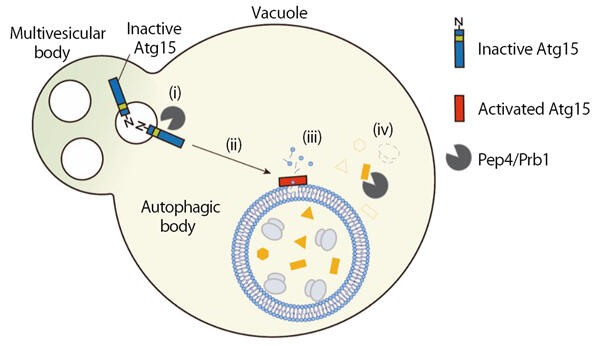Autophagy, a cellular-component recycling system, is present in all living animals and plants that contain a nucleus in their cells. For approximately 30 years, genetic research studies have suggested that the protein named autophagy-related 15 (Atg15; considered as a phospholipid-degrading enzyme) and a proteolytic enzyme are essential for decomposing the membrane lipids of autophagic bodies derived from autophagy and the organelles contained within them. However, the difficulty in isolating the active form of Atg15 from the vacuole (an intracellular organelle) in which it functions has been a major barrier to the deeper analysis of the enzyme.
The research group of Graduate Student Yoko Kagohashi and Assistant Professor Tomoko Horie from the Department of Life Science and Technology of the School of Life Science and Technology at Tokyo Institute of Technology is the first in the world to have purified the vacuoles of budding yeast to high levels of purity. They have also constructed an in vitro system to evaluate the phospholipid-degrading activity of Atg15. Additionally, they have succeeded in purifying Atg15 from the vacuole extract. Through their experiments, the research group revealed that Atg15 is the only phospholipid-degrading enzyme in the vacuole and can degrade various types of phospholipids. Furthermore, they found that the proteolytic enzyme is essential for activating the inactive Atg15 molecule. When both enzymes work together, they can cleave the two fatty-acid moieties of phospholipids, thereby completely disrupting the membrane.
If phospholipid-degrading enzymes work independently, there is a risk of destroying all the membranes of cells that make up the living organism. The fact that the decomposition occurs only in the presence of a proteolytic enzyme is regarded as an ingenious mechanism of living organisms. With further progress in this research area, the mechanisms of lipid breakdown and metabolism will become clearer, and the knowledge gained will be useful in the research of diseases such as cancer and dyslipidemia.
Decomposition of the autophagic body by Atg15





